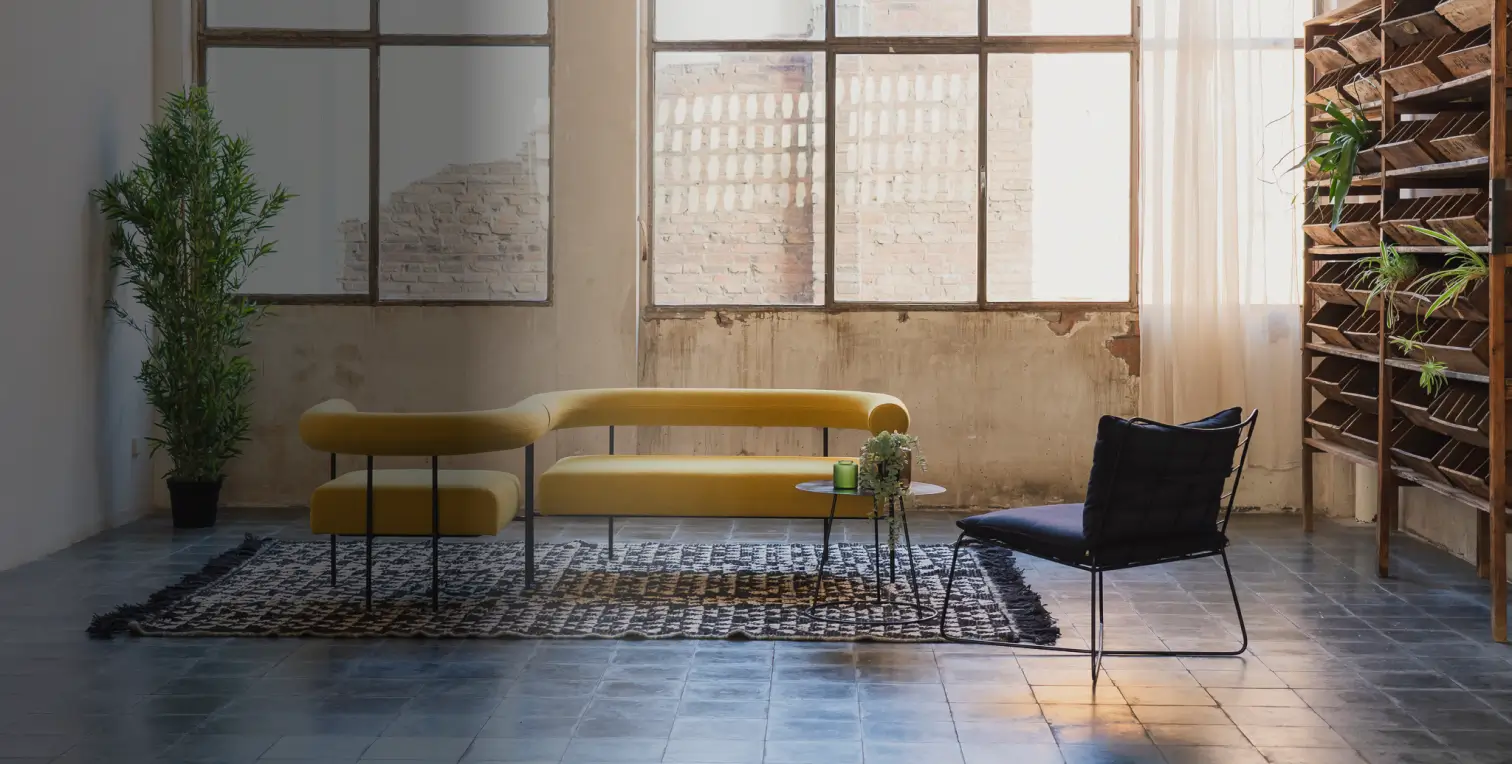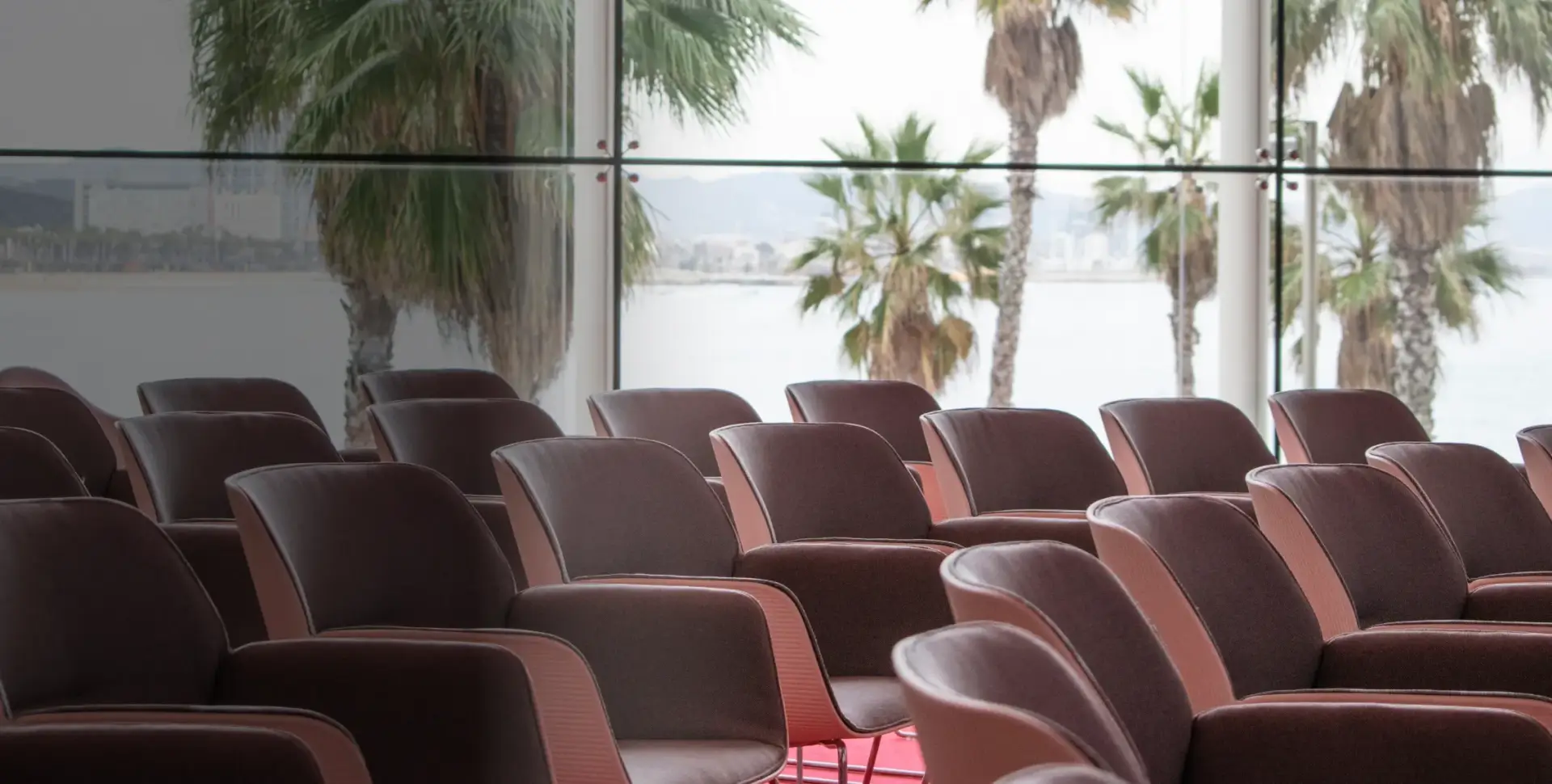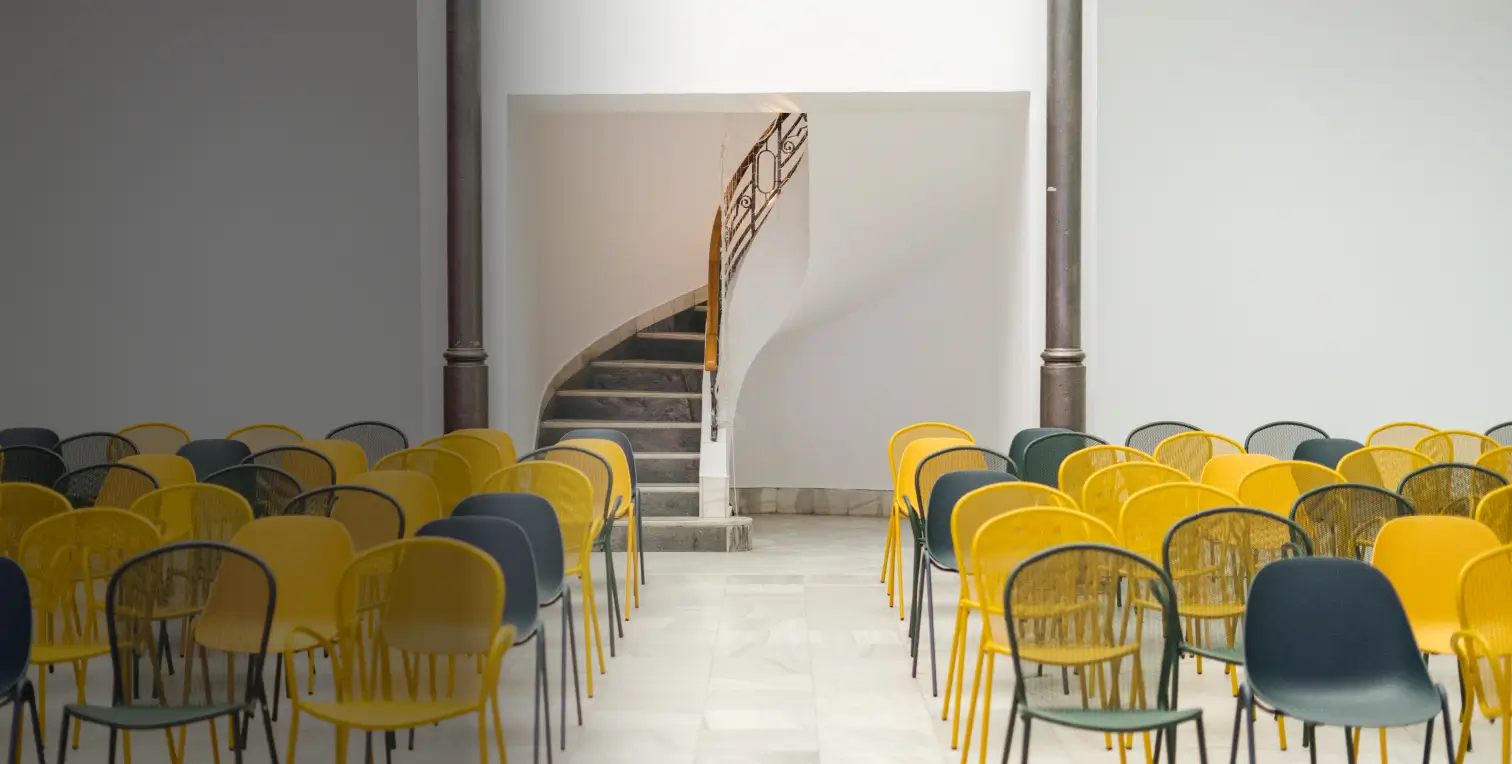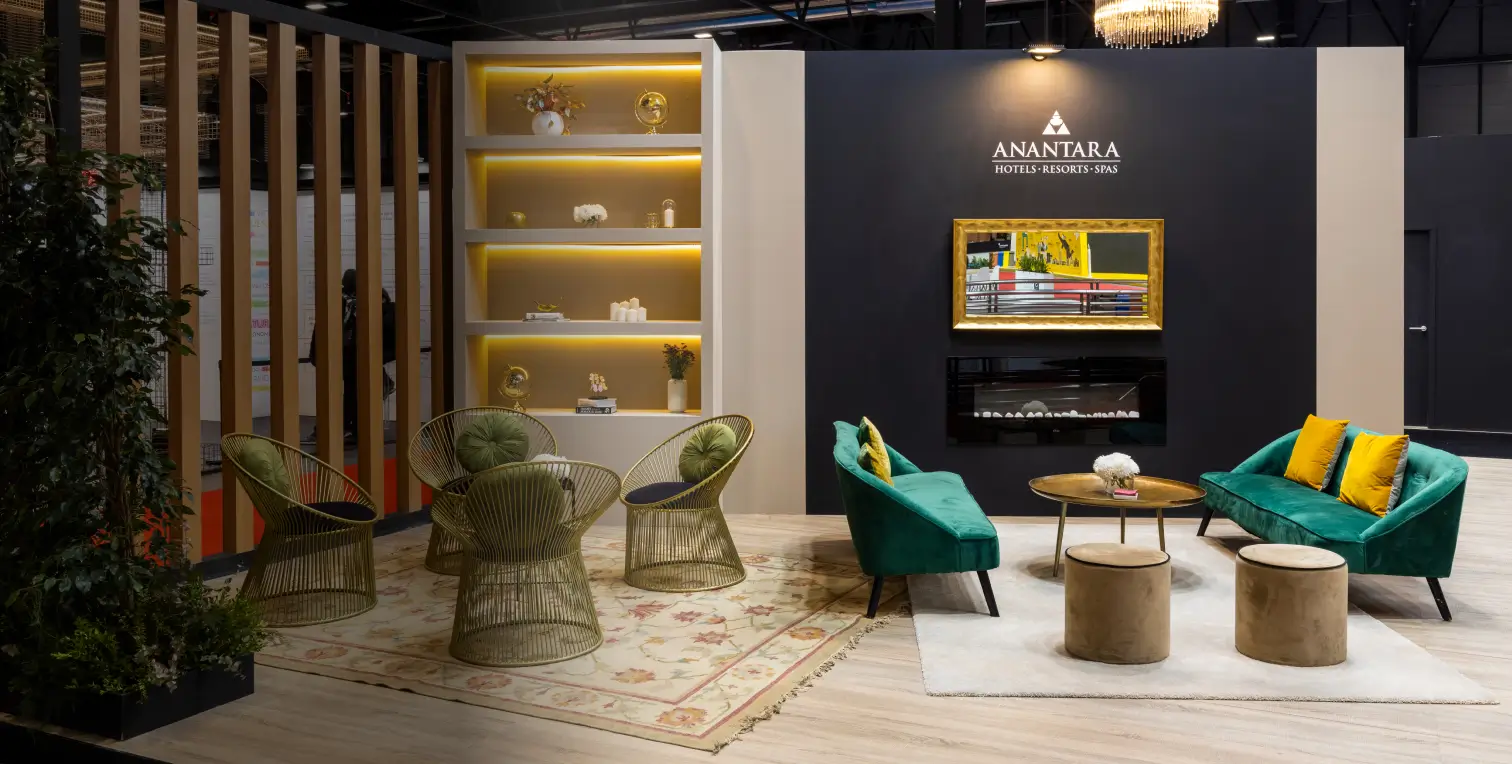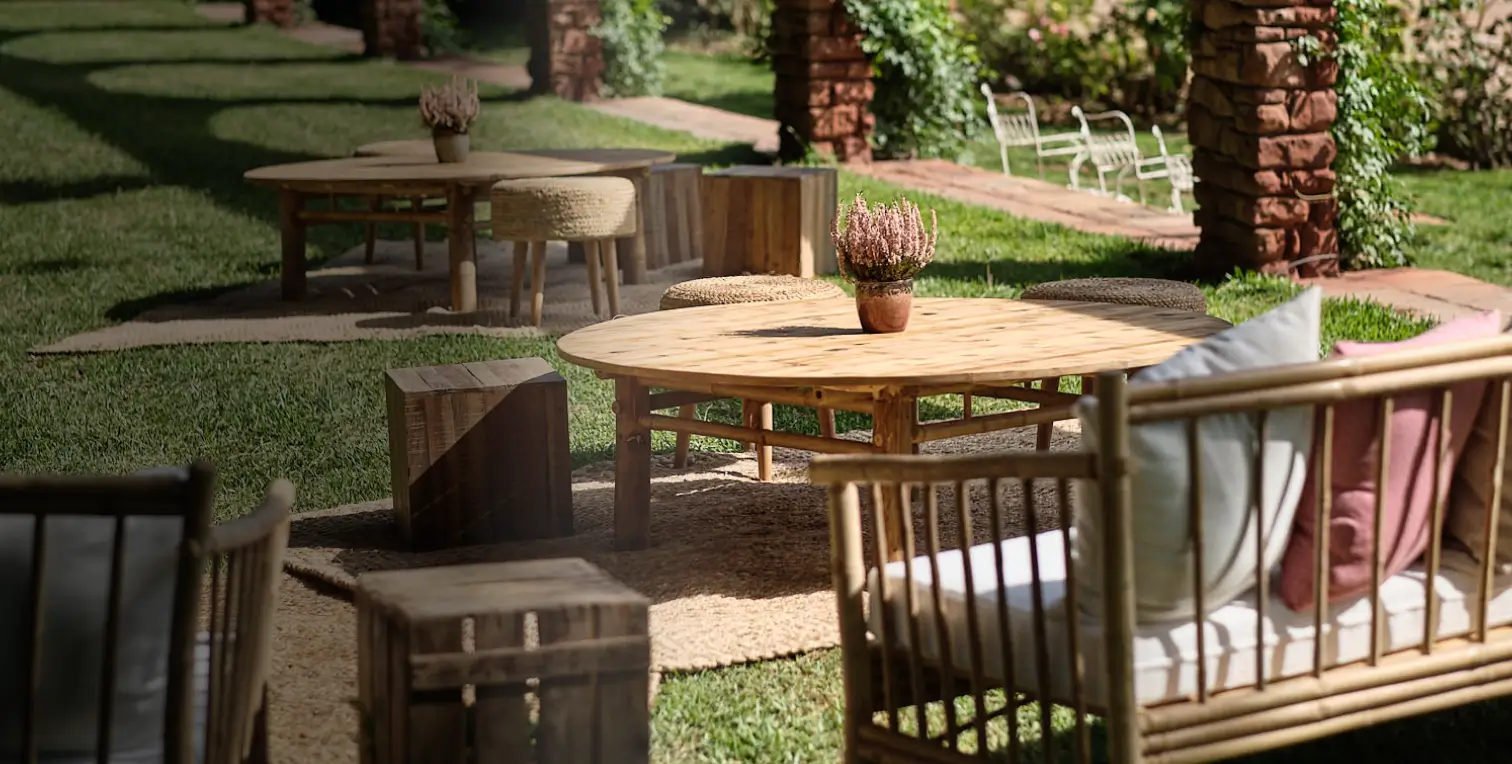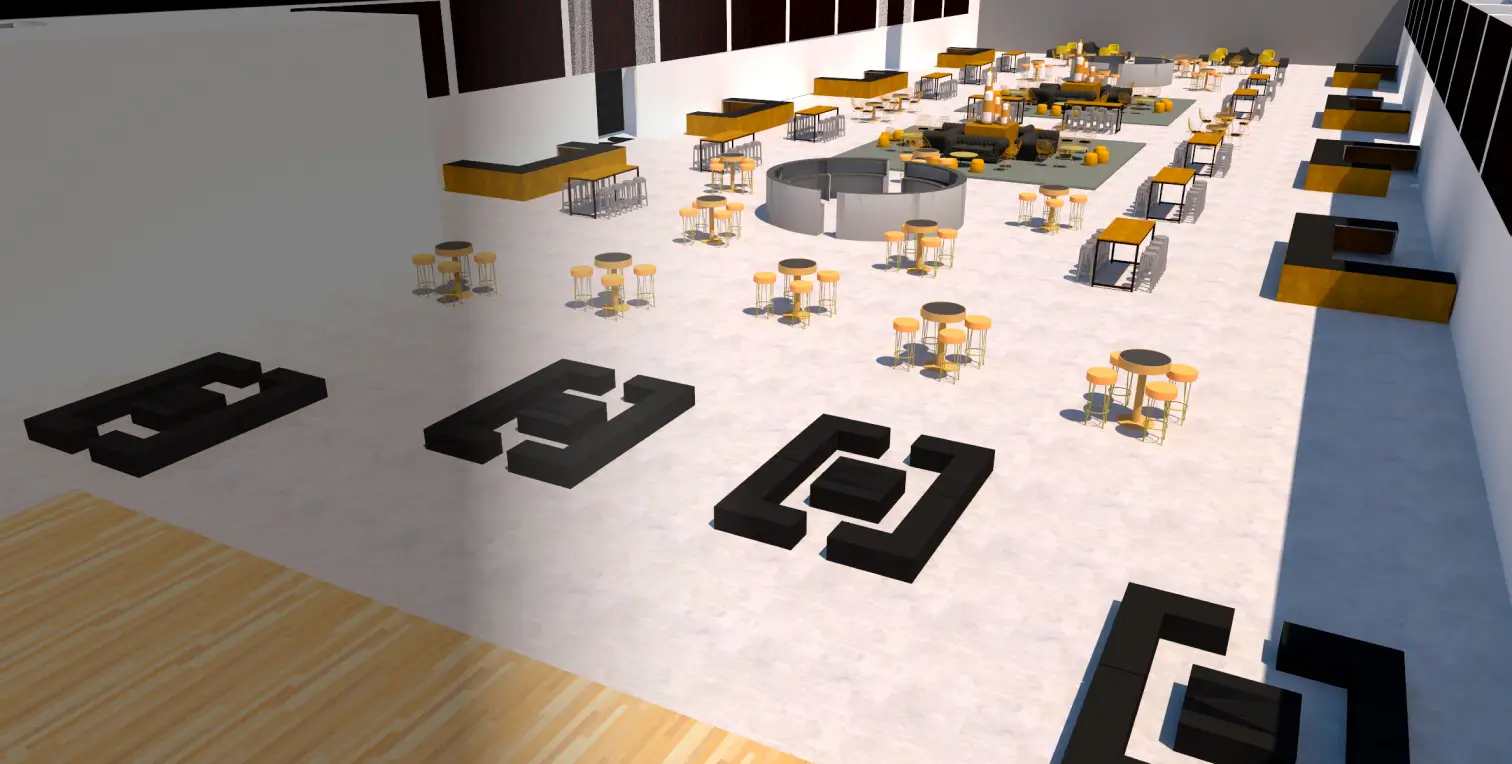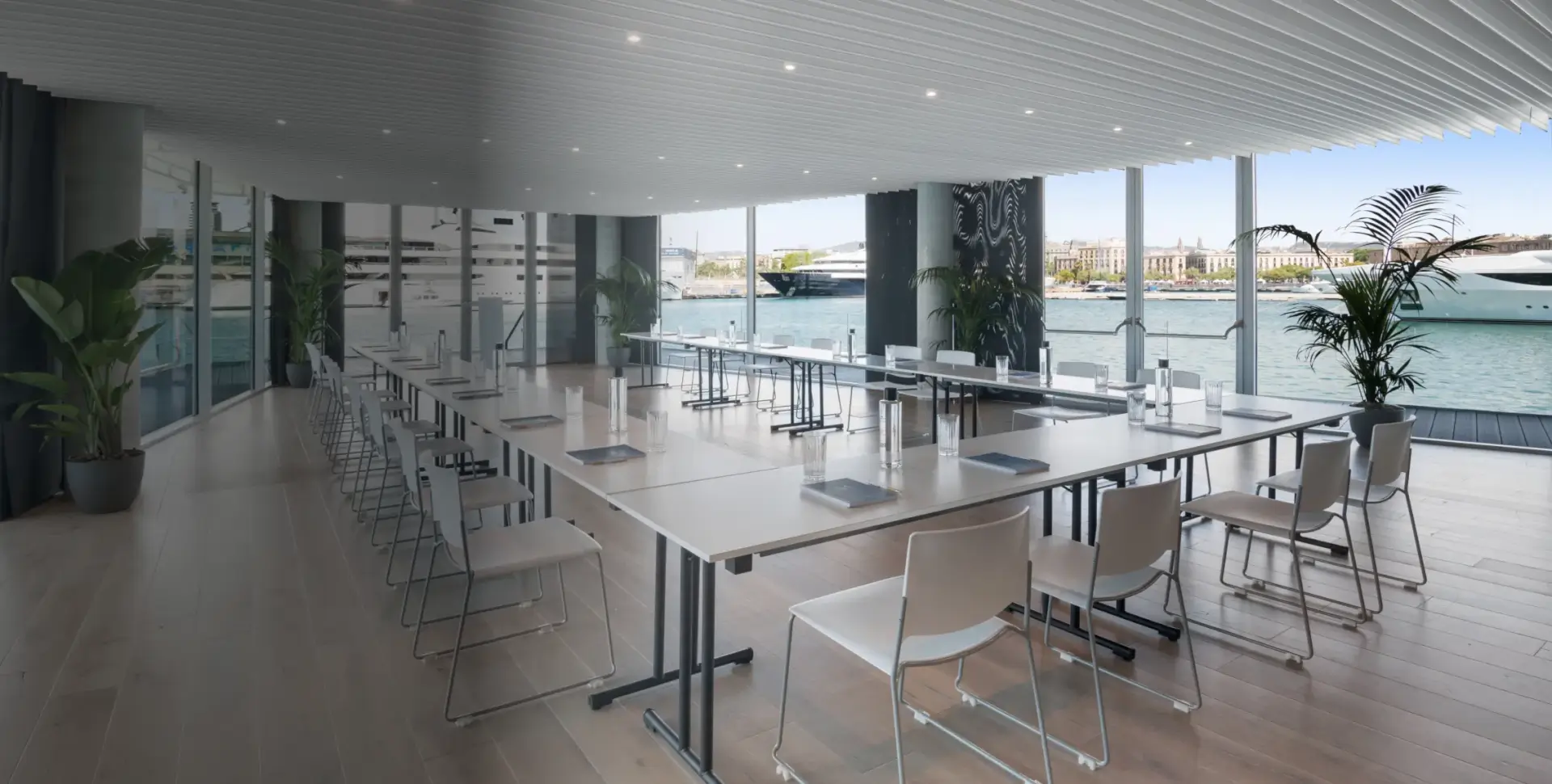How to Organize a Sustainable Outdoor Event: Ideas and Best Practices
Sustainability is no longer a trend—it’s a necessity. In the world of event planning, especially outdoor events, incorporating eco-friendly practices not only reduces environmental impact but also reinforces the ethical commitment of brands and organizers.
This article offers a practical guide for organizing sustainable outdoor events, from using recyclable event furniture to efficient logistics management and the selection of eco-friendly materials.
What Is a Sustainable Outdoor Event?
A sustainable event is one that minimizes its ecological footprint through responsible decisions at every stage of the process: planning, execution, and dismantling. This includes energy consumption and the type of furniture used.
In outdoor events, the challenge increases due to direct interaction with the natural environment, requiring a more mindful approach to resource use.
Sustainable Furniture Rental: The Key to Responsible Setups
One of the first steps to make an event greener is to opt for renting sustainable furniture instead of buying or using disposable materials.
This type of furniture is designed to be reused, repaired, and often made from recycled or FSC-certified materials.
Main benefits:
- Reduced post-event waste.
- Lower environmental impact during production.
- Optimized space for transport and assembly.
Recommendations:
- Choose suppliers specialized in recyclable event furniture.
- Prioritize materials like recycled wood, aluminum, bamboo, or biodegradable plastics.
- Ensure the furniture is in good condition and well-maintained.
Efficient Waste Management: Less Trash, More Positive Impact
A well-designed waste management plan is essential to keep the natural setting clean and promote recycling among attendees. The key is to make waste separation easy from the start.
Best practices:
- Install clearly marked recycling points throughout the venue.
- Use different-colored bins for each type of waste (organic, plastic, paper, glass).
- Include educational messages to encourage correct usage.
Also, consider partnerships with local waste management companies to ensure proper post-event treatment.
Transport and Logistics: Reducing Emissions Without Compromising Quality
Outdoor event logistics can generate high emissions if not planned sustainably. From transporting furniture to moving technical equipment—everything counts.
Sustainable strategies:
- Hire local suppliers to reduce the carbon footprint.
- Coordinate assembly by zones to avoid unnecessary movement.
- Use electric or shared vehicles whenever possible.
A key point is working with sustainable furniture rental companies that offer integrated and efficient logistical solutions.
Eco-Friendly Material Selection: Thinking Green from the Design Phase
From structures to decorative elements, each component should meet sustainability criteria. It’s not just about reducing, but choosing wisely.
Examples of eco-friendly materials:
- Recycled or organic cotton fabrics for awnings and tents.
- Recycled paper or full digitalization for invitations and signage.
- Non-toxic paints and biodegradable materials for temporary signage.
Incorporating these elements into the planning enhances the event’s image as a model of eco-friendly organization.
Transparent Communication: Educate, Inspire, and Build Loyalty
A sustainable event must also communicate its purpose. Informing attendees about implemented practices not only enriches the experience but multiplies its educational impact.
Suggestions:
- Create information panels at key points around the venue.
- Use social media and printed materials to tell the event’s sustainability story.
- Offer incentives for responsible behavior (like discounts for recycling cups or carpooling).
This approach raises audience engagement and builds a more conscious community.
Practical Example: Sustainable Setup for an Outdoor Music Event
Context: One-day music festival in an urban park.
Applied solutions:
- Reusable furniture: benches made from recycled wood, aluminum mobile bars, and rest areas with natural-material bean bags.
- Solar lighting: LED points powered by solar panels.
- Responsible catering: food trucks with local menus and compostable packaging.
- Waste management: recycling stations in each themed area with support staff and clear signage.
- Efficient transport: agreements with local suppliers and the use of collective transportation for attendees.
This model shows how to integrate sustainable practices without compromising functionality or audience experience.
Final Thoughts on Organizing Sustainable Events
Organizing sustainable outdoor events is perfectly feasible and increasingly desirable.
Taking measures like renting sustainable furniture, using recyclable materials, and planning responsible logistics not only protects the environment but enhances the event’s image and leaves a positive impact on all attendees.
With small changes in planning and execution, your event can become a benchmark for sustainability in the industry.
